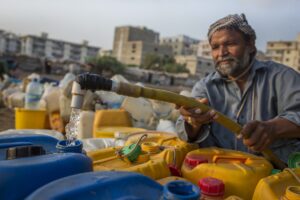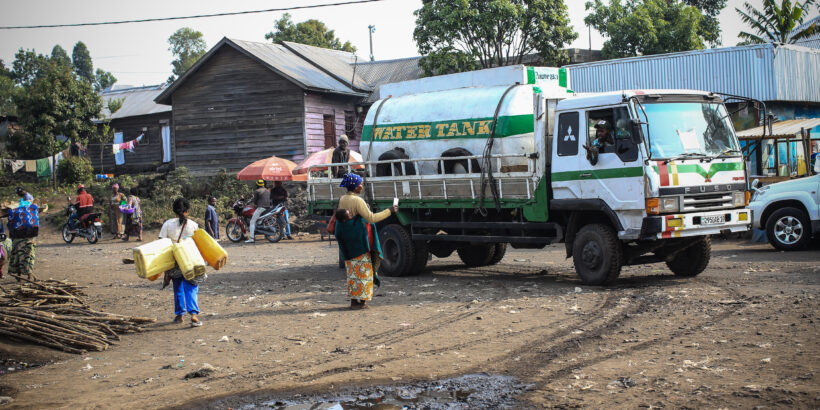Availability of, and access to, safe water is a fundamental tool to combat typhoid. As we celebrate World Water Day, it is important to reflect on the connection between water and public health, understand the importance of investments in water and sanitation infrastructure, and discuss the challenges that remain.
Water and typhoid are connected
Typhoid fever, a bacterial infection caused by Salmonella Typhi, spreads through contaminated water and food. In regions with inadequate access to safe water and improved sanitation facilities, the risk of typhoid transmission increases. Improper or inadequate sewage disposal and lack of wastewater treatment systems contribute to fecal matter in water sources. Stagnant water bodies such as ponds, rivers, and untreated reservoirs serve as ideal breeding grounds for bacteria, including typhoid, yet these sites may also be used to collect household water, putting people at risk.
A study conducted by the Kenya Medical Research Institute in collaboration with the Centers for Disease Control (CDC) and CDC-Africa reviewed typhoid incidence between 2010 and 2019 in Kibera, Kenya, an area with limited access to improved sanitation and clean drinking water. Despite high rates of typhoid early in the study period, there was a notable decline between 2013 and 2018, likely due to improved water supply and acquired immunity. However, a resurgence in 2019 highlights the need for sustained investment in water, sanitation, and hygiene (WASH) infrastructure and typhoid conjugate vaccines (TCV).
Environmental challenges: typhoid and climate change
With climate patterns growing increasingly unpredictable, controlling typhoid becomes more complicated. Extreme weather events such as heavy rains and floods increase the risk of typhoid by overwhelming WASH infrastructure, leading to contamination of water supplies and exposure to bacteria. During droughts, water scarcity forces communities to rely on shallow, potentially contaminated water sources, which can increase the risk of typhoid. In areas with inadequate WASH infrastructure, such as urban slums and refugee communities, the impact of climate change on typhoid transmission can be severe.
Natural disasters can further exacerbate health risks. In July 2022, flooding in Pakistan left millions of people displaced, compromised WASH facilities, and significantly increased the threat of waterborne diseases like typhoid and cholera. Urgent improvements to WASH interventions, such as water treatment or filtration, installation and management of toilets and sanitation systems, and education about proper handwashing and food-handling, are needed to protect communities from the escalating risks associated with climate-induced disasters.

Innovation in surveillance and diagnostics
Environmental surveillance allows for early detection of bacteria in water, guiding proactive measures for typhoid control. The work of scientists such as Dr. Senjuti Saha provides insight into innovative approaches to environmental surveillance, empowering us to strengthen our prevention and response systems. Advancements in diagnostics, such as the novel method of using bacteriophages in water samples to detect typhoid, offer promising avenues for enhancing surveillance. These technologies enable early detection of pathogens, allowing for a timely response to prevent disease outbreaks. Furthermore, strengthening collaboration between public health agencies, water utilities, and research institutions can streamline surveillance efforts.
Safe water, brighter futures
Improving WASH infrastructure requires significant capital investment and sustained political will. While progress is made in advancing WASH initiatives, TCVs provide nearly immediate protection. TCVs can be given to children as young as 6 months of age and can be given alongside routine childhood vaccines, making them a feasible and cost-effective preventive measure against typhoid amidst WASH challenges. By prioritizing access to clean water and sanitation, we can pave the way for a healthier future where the threat of typhoid is significantly reduced, and communities thrive.
Cover Photo: A water tank passing through Kwango province in the Democratic Republic of the Congo (DRC). Credit: TyVAC/Yves Ndjadi.



